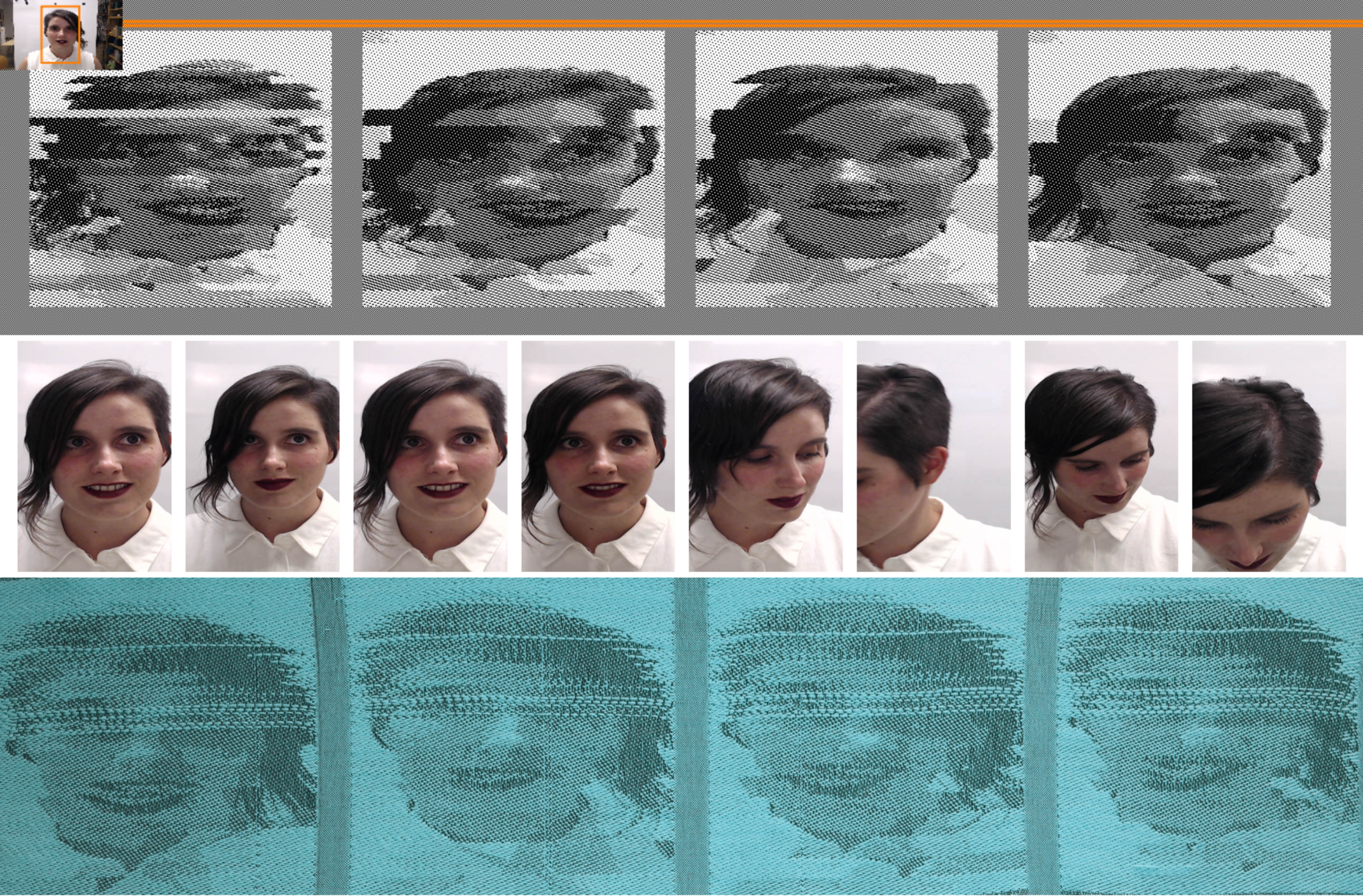
Project in collaboration with the Unstable Design Lab
Computational handweaving combines the repeatable precision of digital fabrication with relatively high production demands of the user: a weaver must be physically engaged with the system to enact a pattern, line by line, into a fabric. Rather than approaching co-presence and repetitive labor as a negative aspect of design, we look to current practices in procedural generation (most commonly used in game design and screen-based new media art) to understand how designers can create room for suprise and emergent phenomena within systems of precision and constraint. We developed three designs for blending real-time input with predetermined pattern features. These include: using camera imagery sampled at weaving time; a 1:1 scale tool for composing patterns on the loom; and a live “Twitch” stream where spectators determine the woven pattern. We discuss how experiential qualities of the systems led to different balances of underdetermination in procedural generation as well as how such an approach might help us think beyond an artifact/experience dichotomy in fabrication.